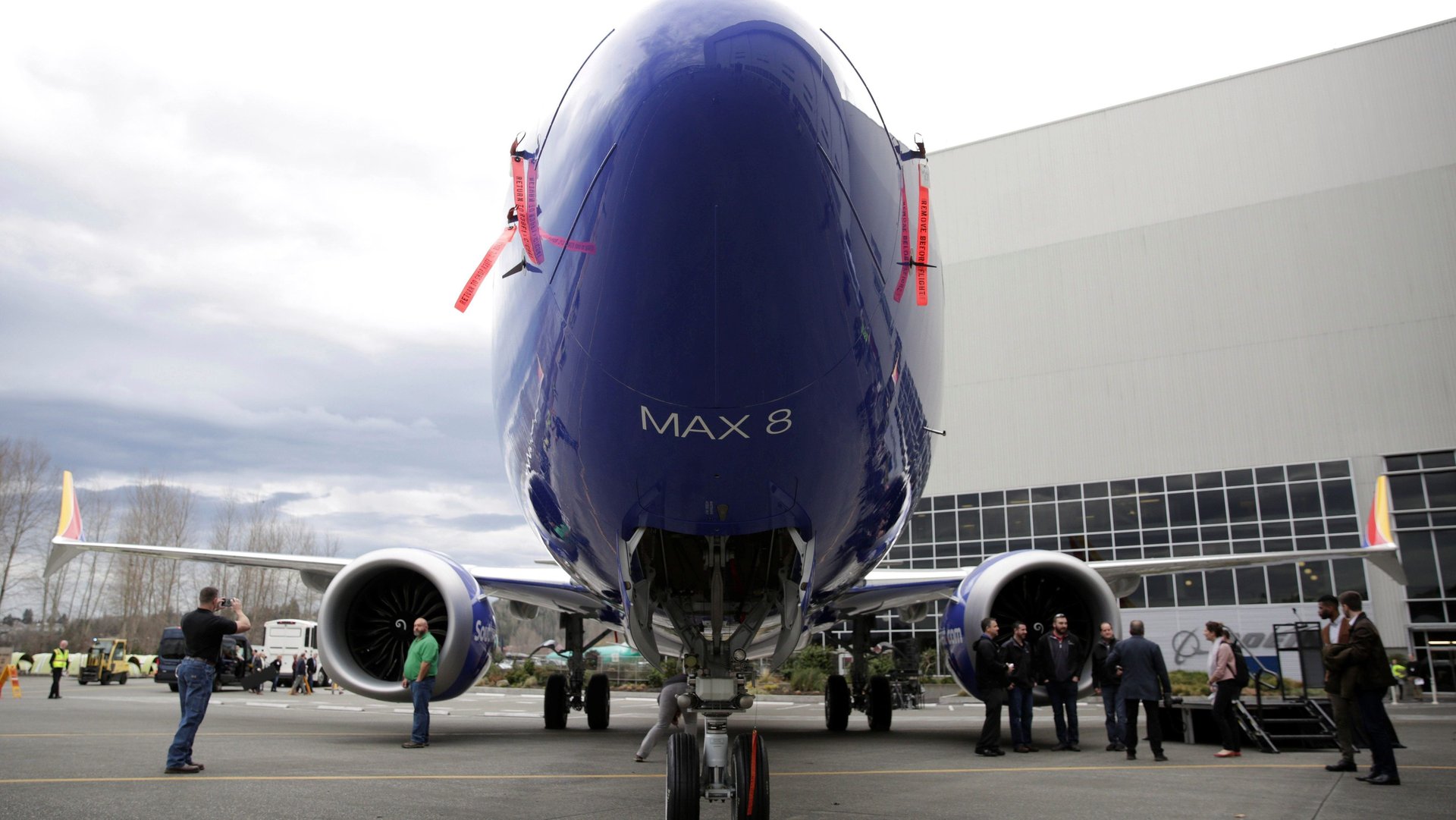Pilots say they weren’t trained for the risks of a new Boeing 737 Max flight feature
Investigators in Indonesia have zeroed in on the role of a new feature on the Boeing 737 Max 8 as they try to pinpoint what led to the crash of Lion Air flight JT610, which killed 189 people when it went down in the Java Sea on Oct. 29.


Investigators in Indonesia have zeroed in on the role of a new feature on the Boeing 737 Max 8 as they try to pinpoint what led to the crash of Lion Air flight JT610, which killed 189 people when it went down in the Java Sea on Oct. 29.
On Tuesday (Nov. 13) the Wall Street Journal reported (paywall) that crash investigators, sources at the US Federal Aviation Administration (FAA), pilots at US carriers, and airline regulators are saying the new feature wasn’t adequately publicized, and that pilots weren’t trained on it ahead of the 737 variant being phased into fleets.
According to the Journal, the automated stall-prevention system, which is on the Max 8 and Max 9 models, is supposed to help pilots avoid accidentally raising the nose too high—but under certain rare conditions, the feature can actually push the nose down so sharply that crews can’t redirect the craft.
In the case of the Lion Air flight, Indonesian regulators first focused on an airspeed indicator and data from a faulty sensor feeding information about the “angle of attack” of the plane’s nose. Now they are also looking at how pilots were trained to deal with the plane’s reactions to such data, with regulators saying the situation faced by the Lion Air crew last month was not in the aircraft’s flight manual, Reuters reported.
Boeing said in a statement today that it is confident of the 737 Max’s safety, and is “taking every measure to fully understand all aspects” of the Lion Air crash in close coordination with investigators and regulators. “Safety remains our top priority and is a core value for everyone at Boeing,” it said.
A week ago, the aviation firm put out a worldwide safety bulletin directing operators to procedures for dealing with faulty angle sensor data. The FAA on the same day ordered fleets to update their training manuals with information on how to adjust for the feature in Max 8 and 9 planes. Pilots in the US say the information in those directives led them to realize (paywall) they had not been informed and trained on the feature.
“It is information that we were not privy to in training or in any other manuals or materials,” Dennis Tajer, a spokesman for the American Airlines pilots’ union, told Reuters.
Boeing has taken nearly 4,800 orders for its Max aircraft globally from short-haul carriers. The model has better fuel efficiency and passenger capacity compared with the older 737s, which could help budget airlines’ bottom lines.
The first 737 Max 8 was delivered in May last year to Malindo Air, a subsidiary of Lion Air Group, and put into operation the same month, while the Max 9 was first delivered earlier this year. More than 200 have been delivered to various carriers through September.